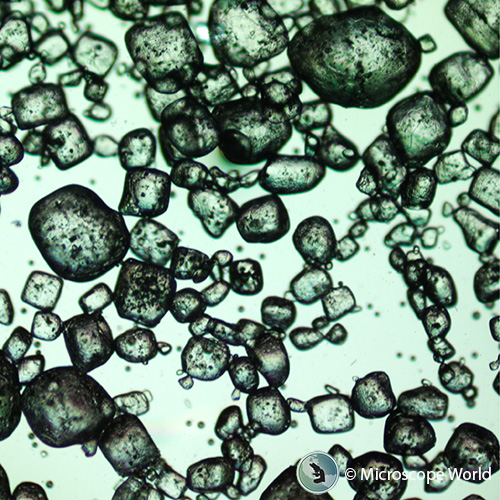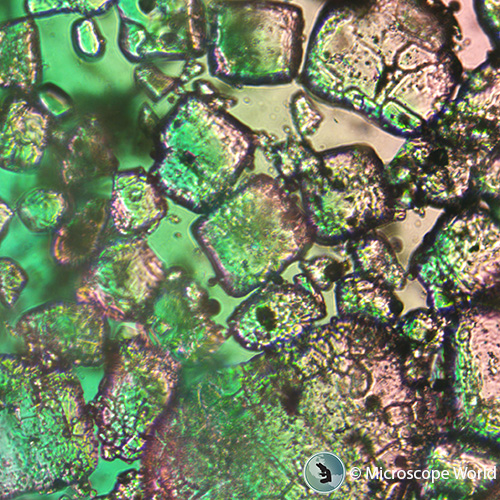
Salt Crystals Under the Microscope
The following images were obtained using a polarizing microscope.

The sample above is of a mixture of potassium chloride, sodium chloride, and calcium chloride at 37 degrees Celsius at 40x total magnification using a quartz wedge. A quartz wedge is a compensator that fits into a slot in the microscope in order to better visualize the sample.

The sample above is of a mixture of potassium chloride, sodium chloride, and calcium chloride at 100x total magnification.
When is polarized light used for viewing samples?
Polarization is useful for viewing samples with crystals due to the anisotropic character of these kinds of samples. That means that when light is passed through these kinds of samples, the light refracted off of the sample will exhibit different properties depending on which direction the crystals in the sample are oriented. Birefringent crystals will refract light in two slightly different directions to form two light rays, and these rays are focused by the polarizing component of the microscope so that the specimen can be visualized.
For more information regarding polarizing microscopes, please contact Microscope World.
